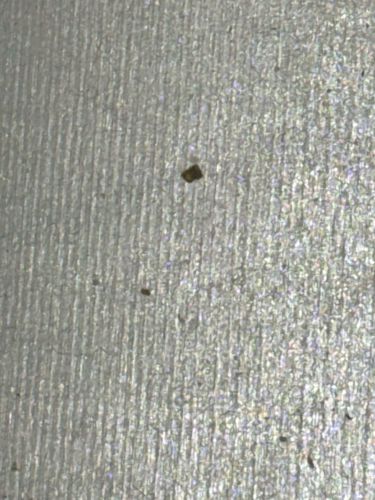Dust Mite (or possibly a very small louse/mite species, but dust mite is most likely given the visual information and commonality of such particles)
Scientific Name: Dermatophagoides spp. (e.g., Dermatophagoides pteronyssinus, Dermatophagoides farinae)
Order & Family: Order: Sarcoptiformes; Family: Pyroglyphidae (for common household dust mites)
Size: Typically 0.2-0.3 mm (200-300 micrometers) in length, making them microscopic and barely visible to the naked eye as tiny specks.

Natural Habitat
Commonly found in human dwellings, especially in bedding, upholstered furniture, carpets, and clothing where they feed on shed skin cells and thrive in warm, humid conditions.
Diet & Feeding
Dust mites feed on organic detritus such as flakes of shed human and animal skin, pollen, fungi, and bacteria. They do not bite people or animals.
Behavior Patterns
They are typically slow-moving and can be found in dusty environments. Their small size and cryptic coloration make them difficult to spot. They undergo incomplete metamorphosis (egg, nymph, adult). They are known to be quite resilient and can survive in harsh conditions.
Risks & Benefits
Potential Risks: Dust mites are a significant cause of allergies and asthma in humans due to their fecal matter and body fragments. Exposure can lead to symptoms such as sneezing, runny nose, itchy eyes, skin rashes, and respiratory issues. Potential Benefits: In higher numbers, they contribute to the decomposition of organic matter, but for most human environments, their presence is primarily associated with health risks. There are no known direct benefits from their presence in human habitation.
Identified on: 8/29/2025